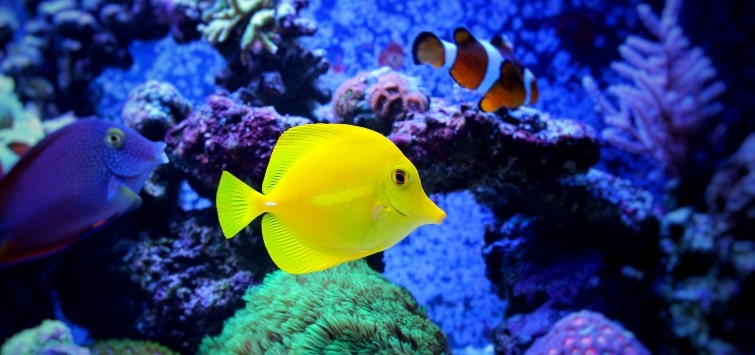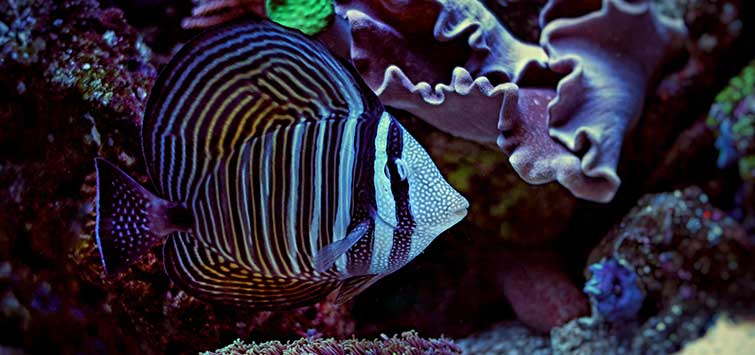Zebrasoma flavescens
Common Names: Yellow tang
Type Locality: Hawai'i, USA
Range: Pacific Island chains--Hawai'i, Marcus, Mariana, Marshall, Ryuku, and Wake
Taxonomic Troubles: None. Originally described as Acanthurus falvescens.
Size: To 20 cm (8 inches)
Preferred Water Chemistry: Maine. Tropical. Temperature 24 to 28 degrees Celsius (75 to 82 degrees Fahrenheit). SG 1.025. pH 8.3
Difficulty: Generally hardy, but prone to parasitic infections like Cryptocaryon and to the degenerative wasting of HLLE. The former can be controlled with cleaner shrimp; proper diet is stronly implicated in the latter. These fish are herbivorous.
Tank Setup: A well-cycled and uncrowded tank of at least 50 gallons, preferably with healthy live rock. Reef safe. Maximum oxygen saturation is required, and this is usually the first fish to succumb when circulation or filtration is inadequate.
Feeding: Herbivore, a continuous feeder. Will eat troublesome Valonia bubble algae. Feed marine algae and algae-based prepared foods. Dried seaweed such as nori is good. SUpplement with any quality foods.
Breeding: To date, not bred successfully in captivity
Fish Description
A slender, long-nosed surgeonfish of uniform bright yellow. Like all tangs, they have a razor-sharp spine at the base of the tail that is used for defense (and which tangles easily in nets).
Notes
The yellow tang is deservedly popular and is ubiquitous in reef tanks, even those that are too small for the fish. Although very popular with beginners, this fish is prized by experienced reef hobbyists as well.
Diet
Its bright color and ceaseless energetic swimming would endear it to aquarists even without its voracious appetite for algae, which is an essential element of its diet. Although it will eat romaine lettuce, this fish will fare much better on a diet of macroalgae--for example, Caulerpa grown in a sump and harvested regularly.
Social Behavior
A common desire is to have a school of yellow tangs, and they are gorgeous in groups. They follow each other endlessly around the tank. As with all tangs, however, it is difficult to control aggression. Small groups can sometimes be established in very large tanks, but not with certainty. Why does a fish found in such large aggregations in the wild get along so poorly with its fellows in captivity? I once saw the answer to this question in an outdoor pool in Kona, Hawai'i, where several dozen Z. flavescens lived harmoniously around several piles of live rock. The fish were constantly challenging each other, but these encounters ended after seconds with one of the fish zooming several yards away.
Aquarium Keeping
In the wild, 100 specimens may be found together, but they forage over an area of 1000 square feet or more. Most aquaria are less than 10 square feet; you do the math.
Found in enormous numbers along Hawai'ian coasts, this species is the number one fish export from the Aloha State. It is therefore readily available at low price--and in good health. Domestic specimens are generally much less stressed than those from Pacific island nations. The yellow tang has much going for it as an ideal aquarium fish as long as its simple needs are met.

.png?h=595&iar=0&w=2781&hash=5FD5E69473BCC22199FBFA2FB71B6033)



